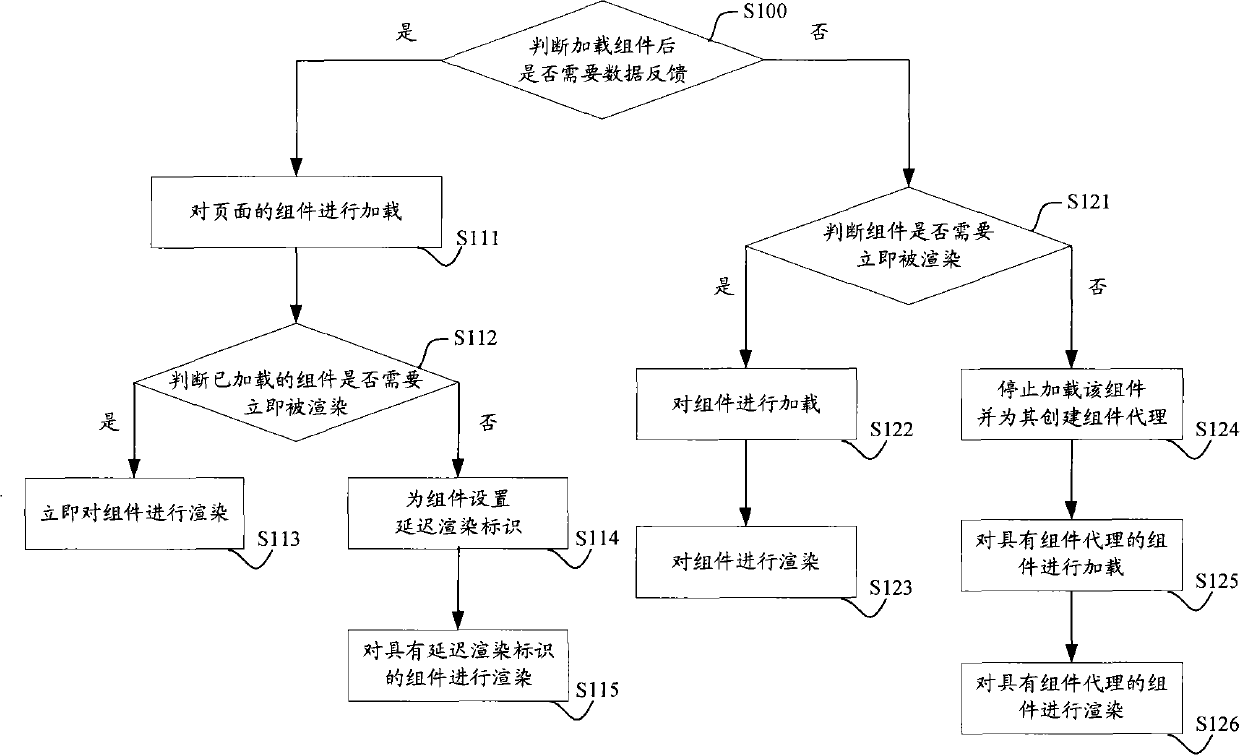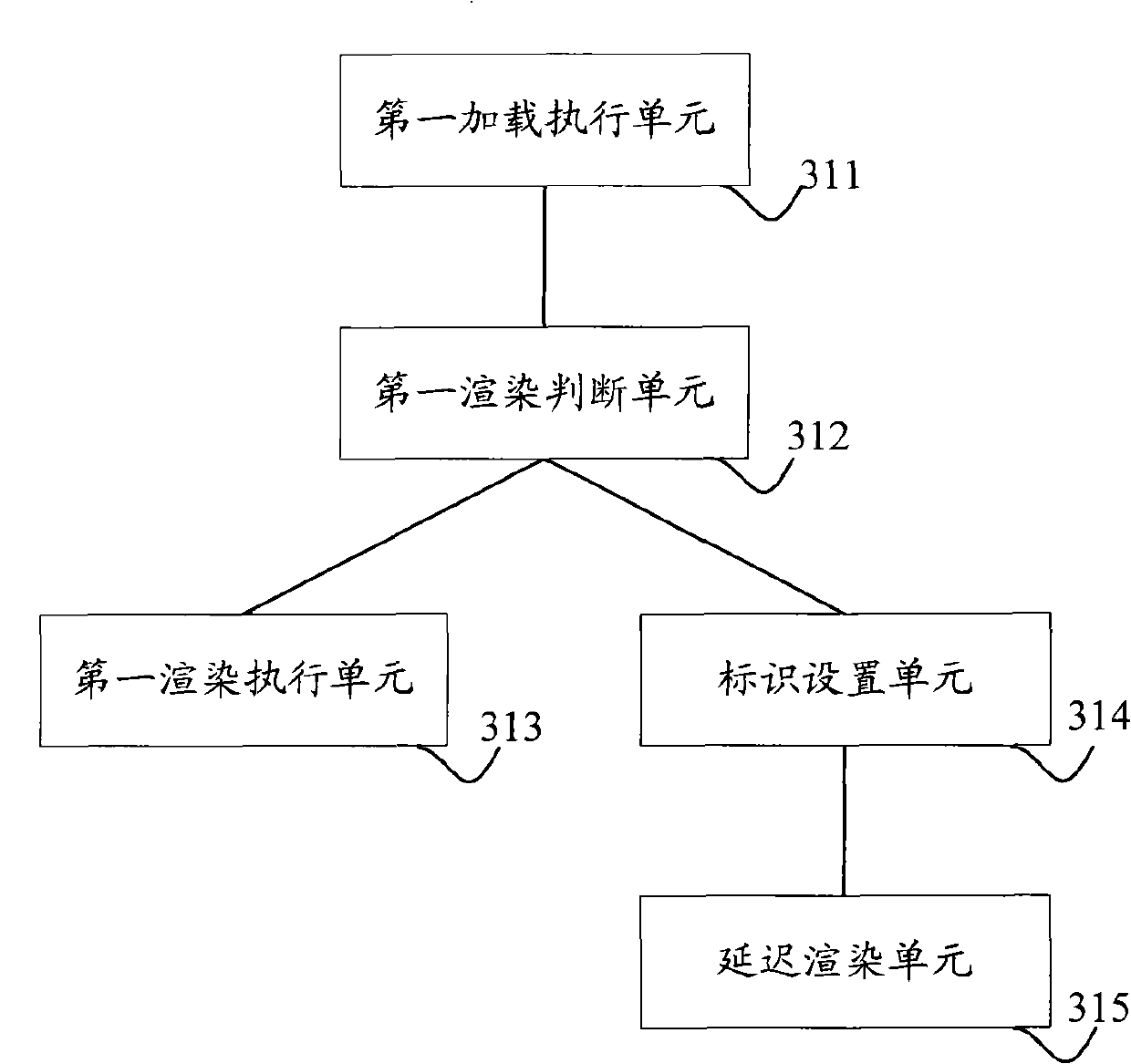Component rendering method and device
A component and delayed rendering technology, applied in the direction of program control devices, program loading/starting, etc., can solve problems such as poor user experience, affecting basic functions, slow screen display speed, etc., to avoid system resource occupation problems and avoid meaningless , avoiding the effect of rendering operations
- Summary
- Abstract
- Description
- Claims
- Application Information
AI Technical Summary
Problems solved by technology
Method used
Image
Examples
Embodiment 1
[0031] figure 1 A flow chart of a component rendering method provided by this application includes the following steps:
[0032] S111. Load the page components according to the page data;
[0033] When a page needs to be called, the system first initializes the relevant data of the page, and after determining the components to be loaded according to the page data, loads these components.
[0034] S112. Determine whether the loaded component needs to be rendered immediately according to the currently output content to be displayed;
[0035] In the solution provided by this application, the loaded visual component is not directly rendered, but firstly judges whether the component involves the content that needs to be displayed immediately. If so, execute S113; otherwise, execute S114; the component encapsulates business logic rules of system operation, and the system can determine when the corresponding component is rendered by analyzing the business logic rules of the compone...
Embodiment 2
[0051] In the first embodiment, the judgment of S112 is for the components that have already been loaded. However, in practical applications, the loading of some components does not have to be executed immediately. For such components, different delayed rendering methods are required. figure 2 The flow chart of the method of this embodiment includes the following steps:
[0052] S100. Determine whether data feedback is required after the component is loaded.
[0053] In this embodiment, after the page data is initialized, the system will analyze the component loading instruction in the page data to determine whether data feedback is required after the component is loaded. If yes, execute S111, otherwise execute S121.
[0054] The loading of components by the system is divided into two situations: one situation requires components to perform data feedback, such as inputting several parameters into components with calculation functions, and the system is required to feed back ...
Embodiment 3
[0069] On the basis of the solutions in the above embodiments, this embodiment provides some preferred implementation solutions to achieve better system resource occupation control.
[0070] In the prior art, many softwares provide display effect options, and users can turn on or off certain display effects that are not necessary for realizing basic functions according to their own preferences and actual hardware configuration. In fact, most users do not understand the actual resource usage of various display effects, so it is difficult to make appropriate display effect configurations without affecting basic functions.
[0071] In the solution provided in this embodiment, at least three options are provided for various display effects of the software, including:
[0072] 1) display
[0073] 2) do not display
[0074] 3) Optional display
[0075] In this way, the user can choose 1) or 2) for the display effect that he wants or does not want to see, and for other uncertain d...
PUM
 Login to View More
Login to View More Abstract
Description
Claims
Application Information
 Login to View More
Login to View More - R&D
- Intellectual Property
- Life Sciences
- Materials
- Tech Scout
- Unparalleled Data Quality
- Higher Quality Content
- 60% Fewer Hallucinations
Browse by: Latest US Patents, China's latest patents, Technical Efficacy Thesaurus, Application Domain, Technology Topic, Popular Technical Reports.
© 2025 PatSnap. All rights reserved.Legal|Privacy policy|Modern Slavery Act Transparency Statement|Sitemap|About US| Contact US: help@patsnap.com



